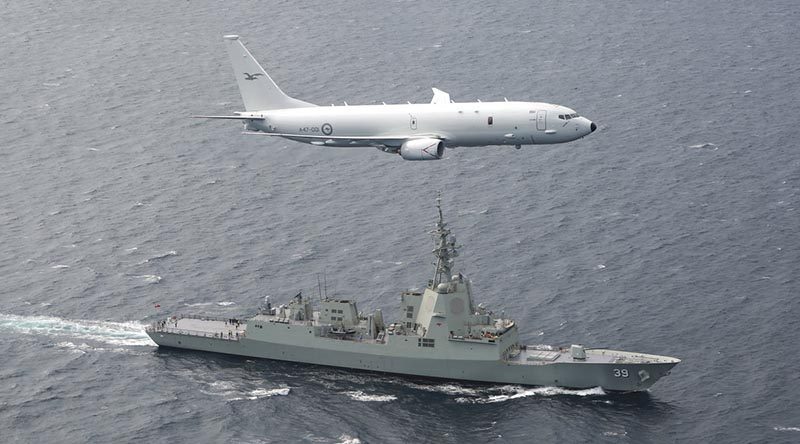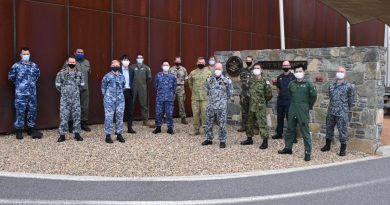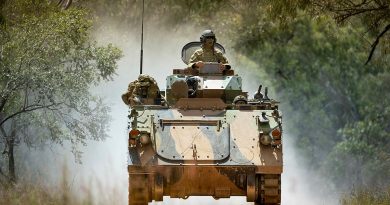What we don’t know about P-8A Poseidon is somehow comforting
Share the post "What we don’t know about P-8A Poseidon is somehow comforting"

The government recently announced that it was buying two extra P-8A Poseidon long-range, armed, maritime search, reconnaissance (and attack) aircraft to add to the the RAAF’s previously-‘complete’ fleet of 12.
FILE PHOTO: A RAAF P-8A Poseidon flies past NUSHIP (now HMAS) Hobart in Gulf St Vincent off the coast of Adelaide. Photo by Corporal Craig Barrett.
What the Royal Australian Air Force thought was its 12th and final Poseidon was delivered in December 2019, though there was an option to buy three more.
While pictures are plentiful enough to do a (small) magazine spread, not much by way of specifics is really publicly known about RAAF’s Poseidon.
Not a lot (of specific detail) is known about Poseidon, aside from the PR-spun basics and that which we can glean or speculate on from educated guessing.
While it has a range of sensor-monitoring stations inside, there’s little external evidence of its sensor suite (unlike Wedgetail’s distinctive radar fin).
But, despite its commercial-aircraft-based DNA (Boeing 737), we can speculate that Poseidon is a formidable weapon’s platform, with an internal bomb bay as well as external hardpoints or weapon mounts.
Poseidon is capable of carrying a wide range and heavy load of offensive weapons including torpedos and missiles for anti-ship and anti-submarine offensive missions.
Carrying up to 34 tonnes of fuel, it also has considerable range and endurance, which can be further extended by in-air refuelling from RAAF’s KC-30A MRTT or other tankers fitted with boom-type fuel dispensers.
Australia also announced a year ago that it intended to extend Poseidon’s regional range even further by upgrading runway and Poseidon-handling infrastructure on the Cocos (Keeling) Islands, giving the aircraft and its capabilities a significant regional footprint.
RAAF’s Poseidon demonstrated its war-fighting capabilities more than two years ago on Exercise RIMPAC 2018 when it fired a live* Harpoon missile that successfully hit its intended target.
*While the missile was considered ‘live’ by RAAF (explained three weeks after we asked) because it performed exactly as a ‘live’ missile should – it was actually carrying a flight/mission-sensor payload instead of an explosive warhead, leaving many, including CONTACT to wonder where was the “Earth-shattering KABOOM” in the video…
Despite what we don’t know about Poseidon however, we do know enough to feel confident that Australia and its Royal Australian Air Force has a very capable platform on its hands – evidenced by the fact it was the first capability expanded when our relationship with China started nosediving.
.
.
.
.
.
.

.
.
Share the post "What we don’t know about P-8A Poseidon is somehow comforting"






Only two more…